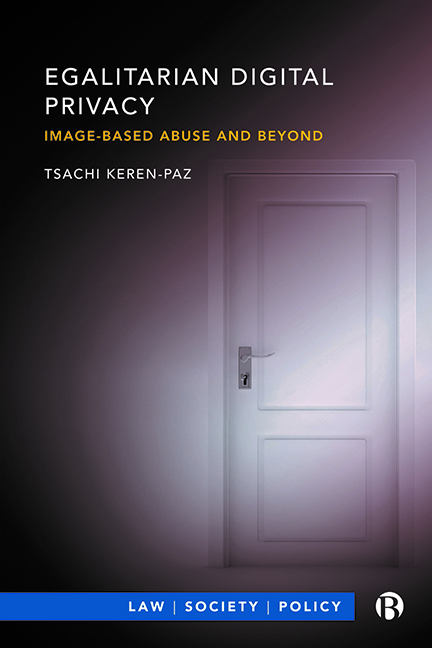Book contents
- Frontmatter
- Dedication
- Contents
- Acknowledgements
- Series Editor’s Preface
- 1 Introduction
- 2 Setting the Ground: The Intermediary Liability Debate and Framing Issues
- 3 First Principles and Occupiers’ Liability: The Case against Immunity
- 4 Property and Privacy: The Case for Strict Liability
- 5 Property and Privacy: Objections and Possible Extensions
- 6 The Policy Debate: Uniqueness of Harm from NCII
- 7 The Policy Debate: Freedom of Expression and Financial Costs of Filtering
- 8 The Easy Case for Viewers’ Liability: Child Pornography and Apportionment of Liability
- 9 Viewers’ Liability: Intention and Objective Fault
- 10 The Power of Property: Strict Liability for Viewing NCII
- 11 Scope of Liability for Breaches of Privacy
- 12 Is Suing Viewers Practicable?
- 13 Conclusion
- References
- Index
8 - The Easy Case for Viewers’ Liability: Child Pornography and Apportionment of Liability
Published online by Cambridge University Press: 17 January 2024
- Frontmatter
- Dedication
- Contents
- Acknowledgements
- Series Editor’s Preface
- 1 Introduction
- 2 Setting the Ground: The Intermediary Liability Debate and Framing Issues
- 3 First Principles and Occupiers’ Liability: The Case against Immunity
- 4 Property and Privacy: The Case for Strict Liability
- 5 Property and Privacy: Objections and Possible Extensions
- 6 The Policy Debate: Uniqueness of Harm from NCII
- 7 The Policy Debate: Freedom of Expression and Financial Costs of Filtering
- 8 The Easy Case for Viewers’ Liability: Child Pornography and Apportionment of Liability
- 9 Viewers’ Liability: Intention and Objective Fault
- 10 The Power of Property: Strict Liability for Viewing NCII
- 11 Scope of Liability for Breaches of Privacy
- 12 Is Suing Viewers Practicable?
- 13 Conclusion
- References
- Index
Summary
Introduction
Viewing NCII harms its victims; as was surveyed in Chapter 6, Part 2.B, victims perceive the acts of dissemination and viewing as violating experiences similar to physical sexual assault. This invokes two questions: can viewers be liable to victims and under what conditions, and if so, what should be the scope of liability, for what harms and for how much? In the area of child pornography, US victims have a statutory right for compensation, as part of the criminal process (‘criminal restitution’ in American parlance) for the pecuniary losses suffered due to their knowledge of the widespread viewing of those images, or as part of a statutory civil cause of action. The first question – of liability for mere viewing – is therefore established, albeit statutorily, for NCII on the extreme end of the scale: cases of child pornography. Following the Supreme Court decision of Paroline v United States and the subsequent amendment of the relevant provisions in the 2018 Amy, Vicky, and Andy Child Pornography Victim Assistance Act (AVAA), the second question (scope) was largely settled as using the ‘relative role in the causal process’ test to apportion the liability of individual viewers.
In my previous writing on this topic – with Richard Wright – we focused on the second question. We both commended and critiqued the majority’s decision in Paroline. Of the three approaches supported by the justices in Paroline, we prefer the middle ground solution advanced by the majority (written by Justice Kennedy), of a sui generis substantial amount, over the alternatives of no liability due to alleged inability to apportion the individual contribution, the position held by Chief Justice Roberts and justices Scalia and Thomas, and of full liability for the entire injury which might have been caused by thousands if not millions of viewers, advocated by Justice Sotomayor. At the same time, given the nature of the harm as both indivisible and significantly overdetermined, and in fact an instance of a mass tort, we criticized the majority’s ‘relative role in the causal process’ test, which was de facto, and contrary to the court’s rhetoric, a manifestation of a proportionate liability test, which is incompatible with the overdetermined character of the injury.
- Type
- Chapter
- Information
- Egalitarian Digital PrivacyImage-based Abuse and Beyond, pp. 132 - 156Publisher: Bristol University PressPrint publication year: 2023



